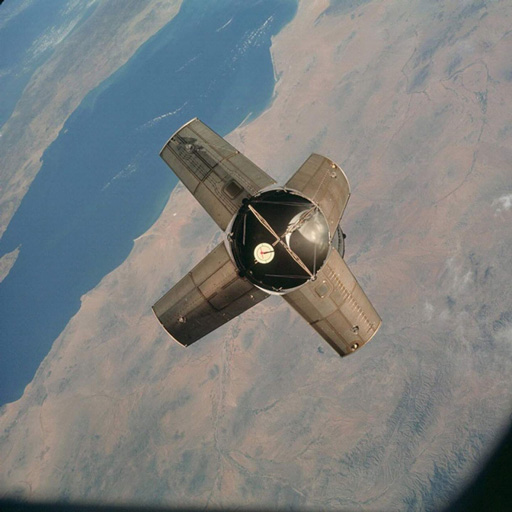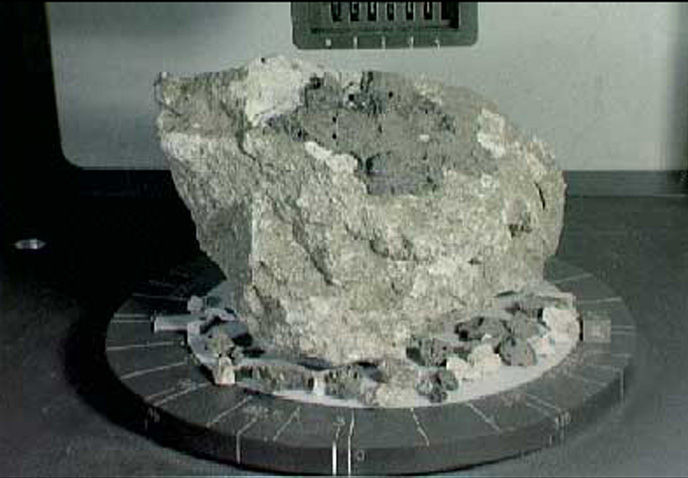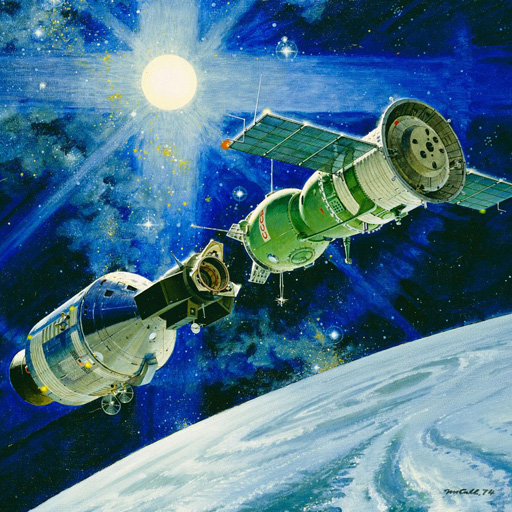
Apollo 17 - Eugene Cernan working at the Rover.Image Credit: NASA/Jack Schmitt (assembled by Mike Constantine)
- What We Learned -
“ . . . I think one could reasonably make the case that Apollo laid the foundations for modern planetary science, certainly as it relates to the origin and evolution of the terrestrial planets.”
—“The Scientific Legacy of Apollo”, Professor Ian A. Crawford, University of London, in Astronomy and Geophysics, December 2012.
Apollo started out as a demonstration of America’s technological, economic and political superiority to communism. It met its goals in those areas when the United States landed astronauts on the Moon before the Soviet Union could. But a portion of Apollo, like the entire space program, was always dedicated to scientific research. Apollo taught us a lot, and not just about the moon.
Some of the earliest beneficiaries of Apollo research were, ironically, Earth scientists. The Apollo 7 and 9 missions, which stayed in Earth orbit, took photographs of the Earth in different wavelengths of light, highlighting things that might not be seen on the ground, like diseased trees or crops. This research led directly to NASA’s Landsat Program, which has been studying Earth’s resources from space for more than 45 years.

The Saturn IVB stage in orbit during Apollo 7's second revolution around Earth.Image Credit: NASA

Apollo 9 photograph of the Nile River and Egypt taken from Earth's orbit on Mar. 7, 1969. Image Credit: NASA
Apollo hardware was used in building Skylab, America’s first space station. The Skylab craft itself was an Apollo Saturn IV-B upper stage, and its launch was the last use of the powerful Apollo Saturn V booster. When it came time to build the space shuttle, NASA engineers used what they had learned during Apollo to make the shuttle’s basic structure stronger and safer while reducing weight.
The Apollo astronauts brought back a wide variety of rocks, more than 800 pounds total. They included material with a large amount of natural glass, formed when meteorites struck the moon. Some of the glass was formed more than 4 billion years ago, preserved by the lack of water and atmosphere on the moon, giving scientists insights into the early days of the solar system.
The discovery of a rock called anorthosite showed that the moon had once been the site of very complex geological processes, not always the “magnificent desolation” that Buzz Aldrin described.

4.4-billion-year-old anorthosite rock sample collected from the lunar highlands of the moon by Apollo 16 astronauts.Image Credit: NASA
Perhaps the most important finding came from comparing similarities in the composition of lunar and terrestrial rocks and then noting differences in the amount of specific substances. Ultimately, this became confirmation of the theory that the moon formed from debris blown off the Earth by a collision with a Mars-sized object early in the Earth’s 4.5-billion-year history.
The Apollo lunar flights ended in 1972, but the knowledge they brought us is still being applied, and still being added to. NASA receives about 60 research requests for samples each year, resulting in about 525 samples being analyzed annually. One survey showed that more than 2,500 scientific papers had been published through 2015 using Apollo data.
Apollo’s legacy goes well beyond science. The moon landings were originally envisioned by President Kennedy as a joint program on which the United States and Soviet Union could work together peacefully. After Soviet Premier Nikita Khrushchev turned down Kennedy, Apollo became a symbol of the international rivalry, and it showed the world that a democracy could make great, focused technical achievements without a cloak of secrecy.
Apollo not only fulfilled Kennedy’s goal of landing a man on the moon before the decade ended, it ultimately achieved his diplomatic goal of the Cold War rivals working together. In 1975, the Apollo-Soyuz Test Project saw the last Apollo spacecraft dock with a Soviet Soyuz, and their two crews conducted joint operations in orbit, a legacy that continues to today as the United States, Russia and 16 other countries work together aboard the International Space Station.

This 1974 painting by artist Robert McCall depicts the planned docking of American and Soviet spacecraft.Image Credit: NASA

The International Space Station is seen from space shuttle Discovery as the two spacecraft begin their relative separation. Image Credit: NASA

